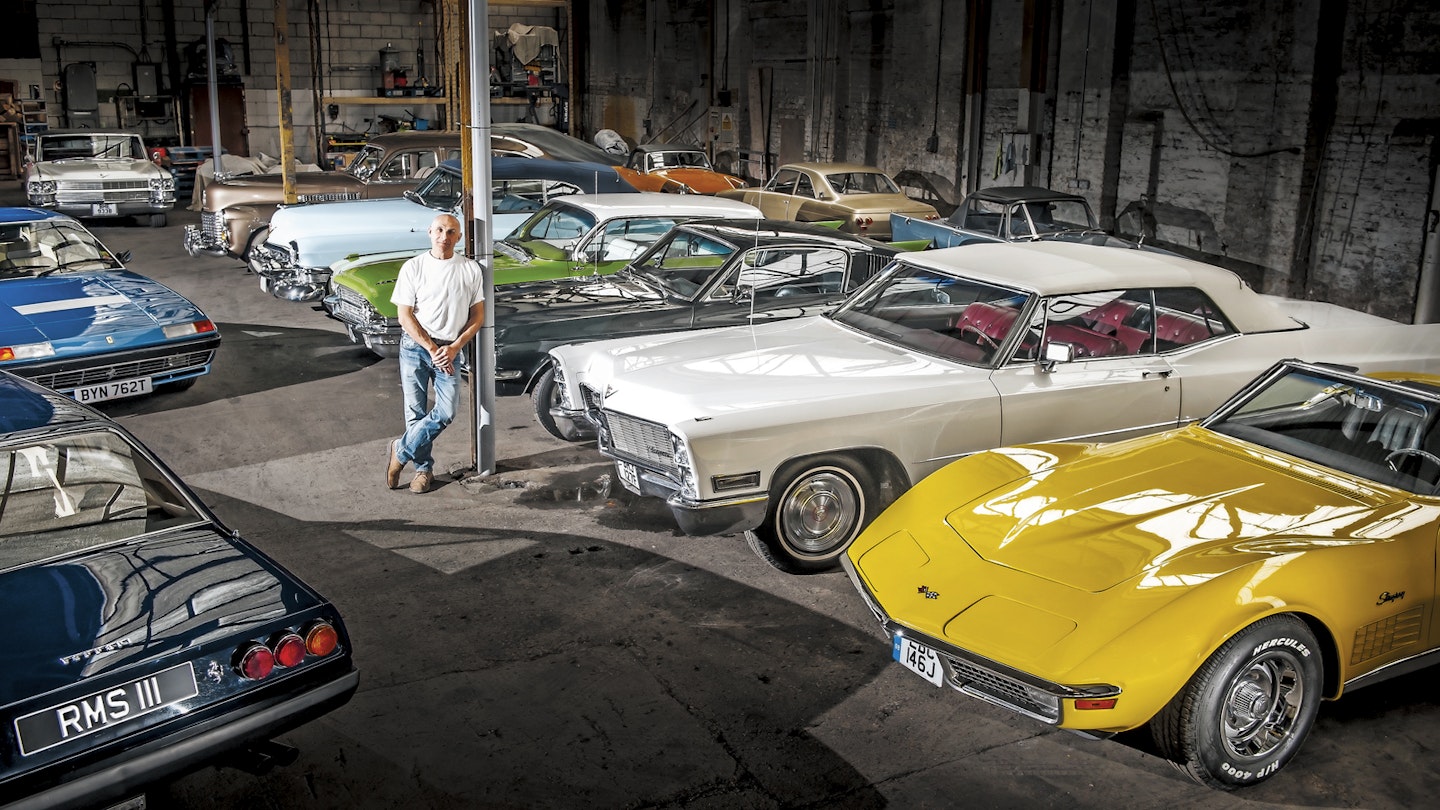Russell Shacter’s love of American cars started in his twenties. Now he has a warehouse full of big-engined behemoths – plus a random selection of European cars, some bought on impulse
When I meet Russell Schacter in the gloomy Victorian warehouse building that houses his collection, the atmosphere is thick with exhaust fumes and energy. It’s not well ventilated in here – ‘sometimes you go home hallucinating,’ says the plain-speaking South Londoner – but that doesn’t stop him enthusiastically moving yet more enormous cars in there to restore, hire and generally enjoy. The morning I arrive he’s just brought home two new additions to the collection from a recent classic car auction – both examples of his beloved Cadillac marque.
‘I’ve always had a thing for big, four-seater coupés and convertibles,’ he says as strip lights flicker dimly into life and heavy car-covers gently slither back over boldly coloured bodywork and flashing chrome. ‘It’s the appeal of turning a journey into an event, and enjoying it with friends and family, plus I love the proportions of those big, three-box designs. There’s something so very “right” about them.’
1953 Cadillac Series 62 Convertible
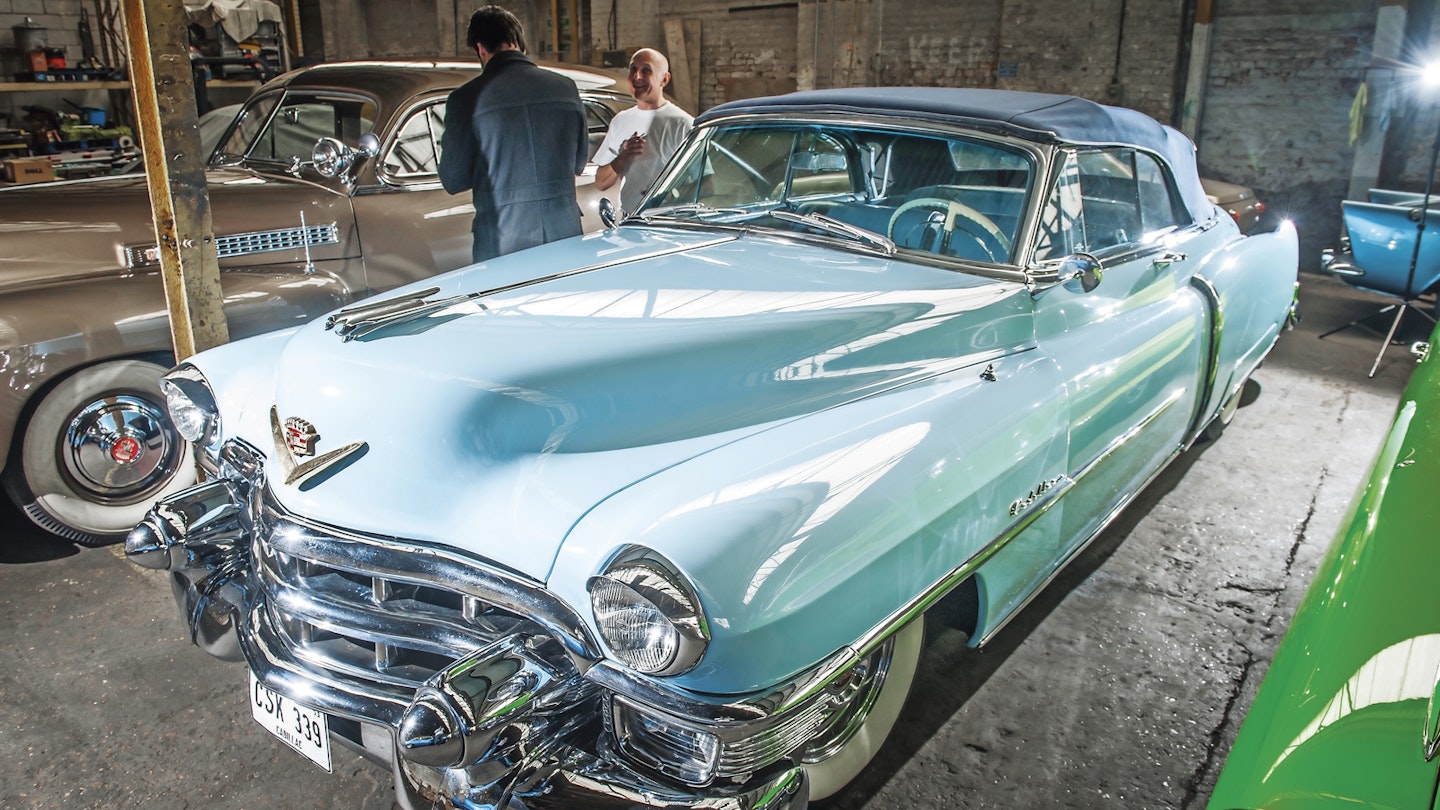
‘I’d always wanted an example of this particular car – the convertible, specifically,’ says Schacter of the car he’s owned the longest. ‘My friends and family had known I’d liked them for years and bought me models of them, but I went to a classic car show in 1988 and saw this very car – I knew I had to have it. I’d just sold my first American cars – 1965 and 1967 Corvettes – so I had some money to spend. The Cadillac’s owner told me that it wasn’t for sale but he had another that was – a 1951 car – that needed some work.
‘He took me to see it in this – which suddenly lost all power on a tight bend – but the ’51 was a basketcase that needed too much work. I said “thanks but no”.
‘Two years later I saw this car for sale in a small ad. He was also selling an immaculate chrome-bumper MGB GT for £3000. I knew it was worth way more so I bought the B instead, and took it to an MG specialist who asked “how much do you want?” He offered £6000, then £6500. I said “make it £7000” and we did a deal.
‘This was 1990, at the very height of the classic car price boom. Prices for British and Italian cars were going mad, but not American cars. With the money from the MG, I went back and bought the Cadillac.
‘Now these command… well, it depends how badly you want one. I’ve seen them sell for £80k, but £55k-£65k is more realistic. I think that MG might be worth £10k now,’ he smiles mischievously.
‘I’ll never sell it – it’s part of the family now. But it does need some restoration work soon. It’s full of odd design features. The windows, for example, are hydraulic, powered by the brake fluid circuit, which leaks into the sills causing them to corrode and discolouring the paint.’
1971 Chevrolet Corvette Stingray
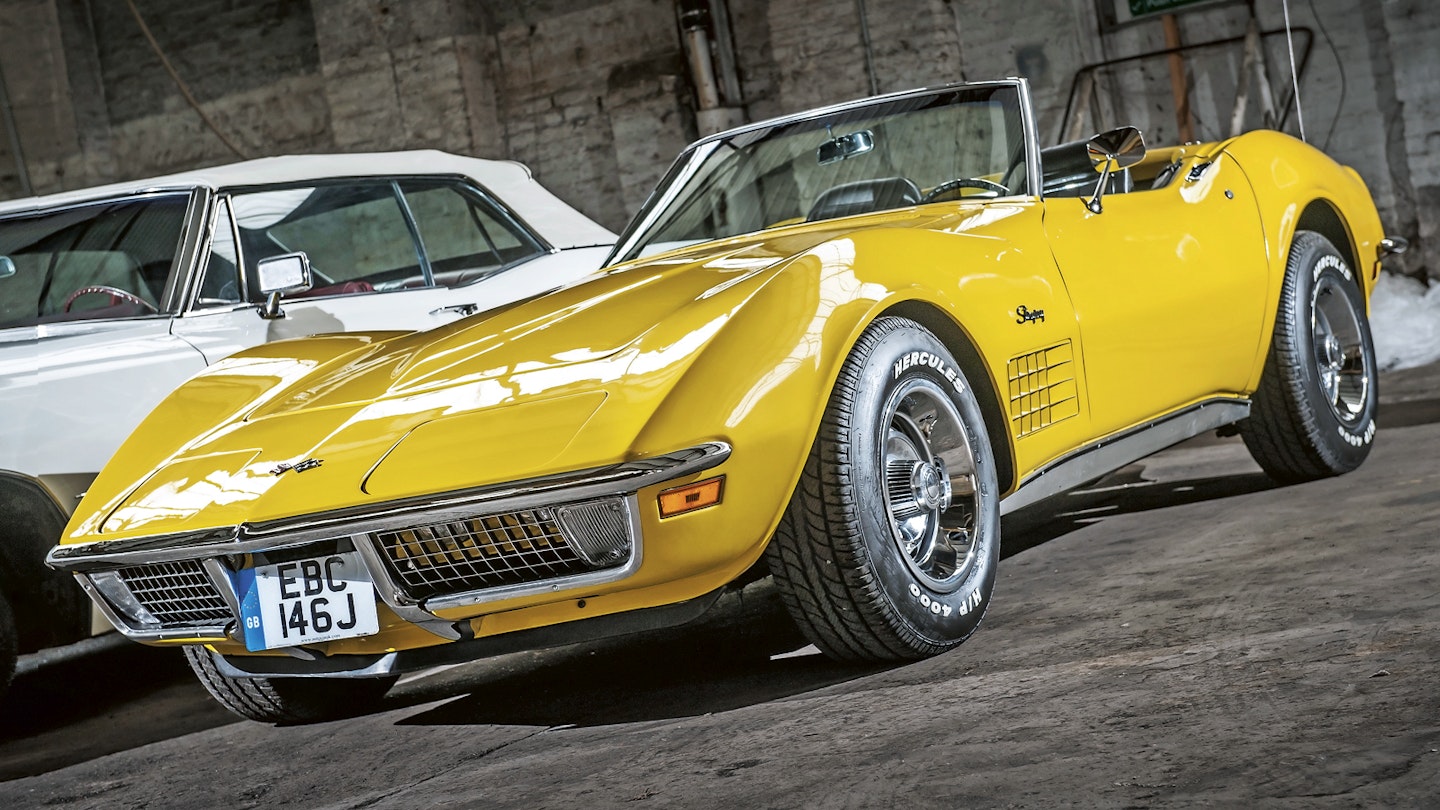
Schacter is well-versed in Corvette ownership, but this bright yellow 1971 car is one of two in the collection currently for sale. ‘I bought it knowing it would go up in value, but it needed a full restoration,’ says Schacter, who does all the work on his cars himself. The restoration – ‘six months of mucking around’ – has just been finished.
‘It wasn’t damaged, but it was very tired, and painted a non-original shade of red. This yellow was its original colour. We ripped the car completely to pieces – engine, suspension, the lot – and rebuilt it to a high standard.’
The car could easily be a concours contender, but Schacter doesn’t like the idea. ‘I don’t do concours,’ he says, flatly. ‘If you get into the concours scene, you get paranoid and stop driving your cars, and that defeats the point of them for me. So that’s why I say I restore to a high – but not concours – standard. I restore to use.
‘I don’t usually sell cars, but I’ve got my daughter’s wedding to pay for. It’s a real wrench – I’m too easily swayed because I only buy cars I like, and you shouldn’t buy things you like if you want to sell them.
‘It should sell, partly because it’s rare – a chrome-bumper, manual-transmission convertible. I’ll get over it, but what I would like to do is track down my very first American car – the 1967 Corvette.’ Anyone interested in buying the Stingray can email Russell on info@americandreams.co.uk. Same if you know the fate of the first Corvette, registered 67 COU.
1941 Cadillac Series 62 Sedan

‘My next-door neighbour found a Chevrolet Chevelle in Walthamstow, seven miles away from where I live. The owner was an American who’d come to live in England and had had the car restored in the US. Sadly the level of detailing wasn’t as expected. Once it came to Walthamstow he drove it twice, then offered it for sale. I had to buy it. It turned out to be a hot rod with an 8.2-litre engine, and couldn’t be driven anywhere without going sideways. My other half wouldn’t go out in it and the fuel consumption was mental. It wasn’t a keeper, but I also knew it would lead somewhere. A field in Northamptonshire, to be exact.
‘There’s a community of guys on a farm out there. They all had Sixties muscle cars apart from one guy with this Cadillac, so we did a straight swap. All it took was one drive and I thought “I’ll keep this for ever”.
‘It’s the oldest car in my collection, and yet its condition is unbelievably close to as-new – it was restored by the guy who did my ’53. There’s no power steering so it’s really heavy – you can’t use one hand on the wheel when reversing, and you have to plan your braking weeks in advance, but once it’s moving it’s effortless and very smooth.
‘The interior is fantastic. Fifties cars are impressive, with lots of chrome, but this car, built in that last era of extravagance before America joined the Second World War, has incredible levels of detailing you’d associate more with a high-end European luxury saloon of the Fifties. The “wooden” dashboard is hand-painted, you can’t feel the changes on the Hydramatic gearbox and it’s got an automatic heater. You just set the temperature.
‘I know full well I will never sell it, for the very simple reason that it has all these things, and yet is 73 years old. It’s from a time when Cadillac probably built better luxury cars than Rolls-Royce.’
Ferraris: 1974 365 GT4 and 1978 400A
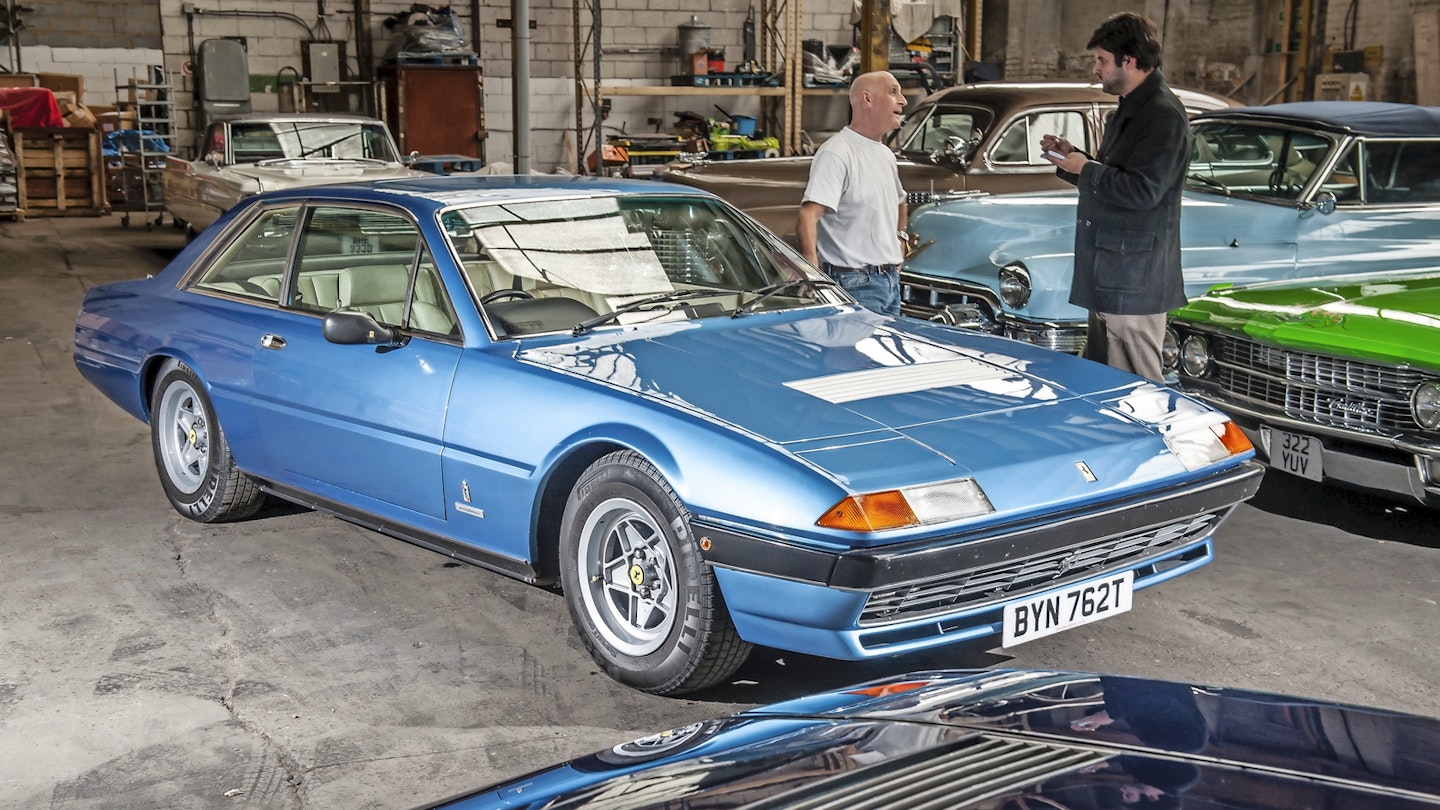
‘I don’t like going fast in anything else,’ says Schacter, comparing his brace of Ferraris to the unloved, offloaded Chevelle. ‘I love the shape – it’s that perfect two-door four-seater layout again. ‘They’re both carburettor cars – the 400 is mint but the 365 is a work-in-progress.The 365 originally went to a businessman in Sweden, but was sent back to the UK almost immediately after the speed limits were lowered and the Swedes started buying left-hand-drive cars after they’d started driving on the right. It must’ve been carnage. He traded a 365 GTC/4 in for it. Looking at the values, I bet he wished he’d kept the GTC/4.
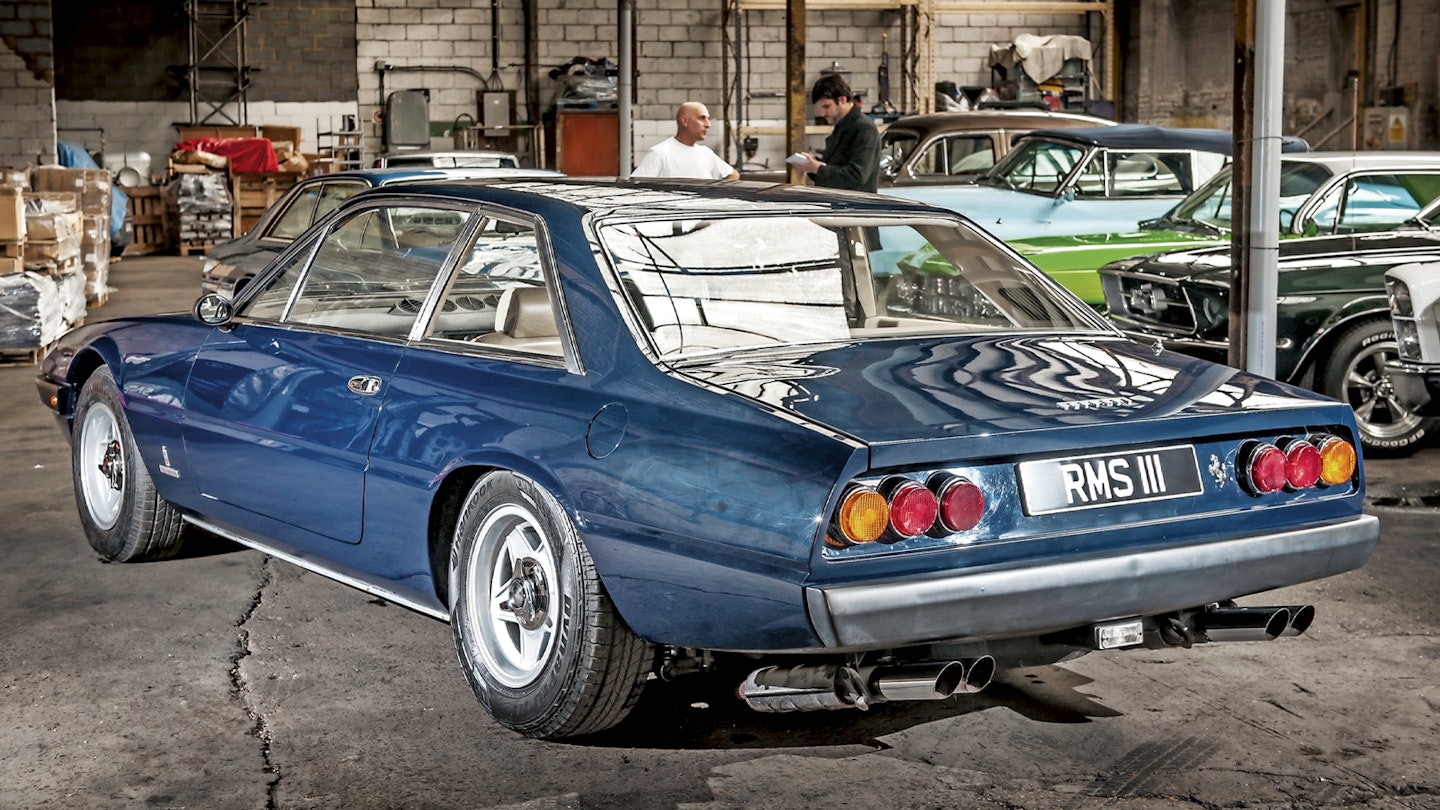
‘The 400 is from 1978 – the last year of carburettors – and was owned by John Prince Smith of Hoopers in Guernsey. I wanted one when I was young. It always starts like that, then becomes an obsession.
‘If there is such a thing as a practical Ferrari, this is it. It’s got a hardcore following and it’s still not expensive but it can’t last – it’s got the same engine as the Daytona, making it desirable by association. I don’t want them to go up in value. Once they become very expensive they become a liability, and you can’t use them properly.’
1964 Cadillac De Ville
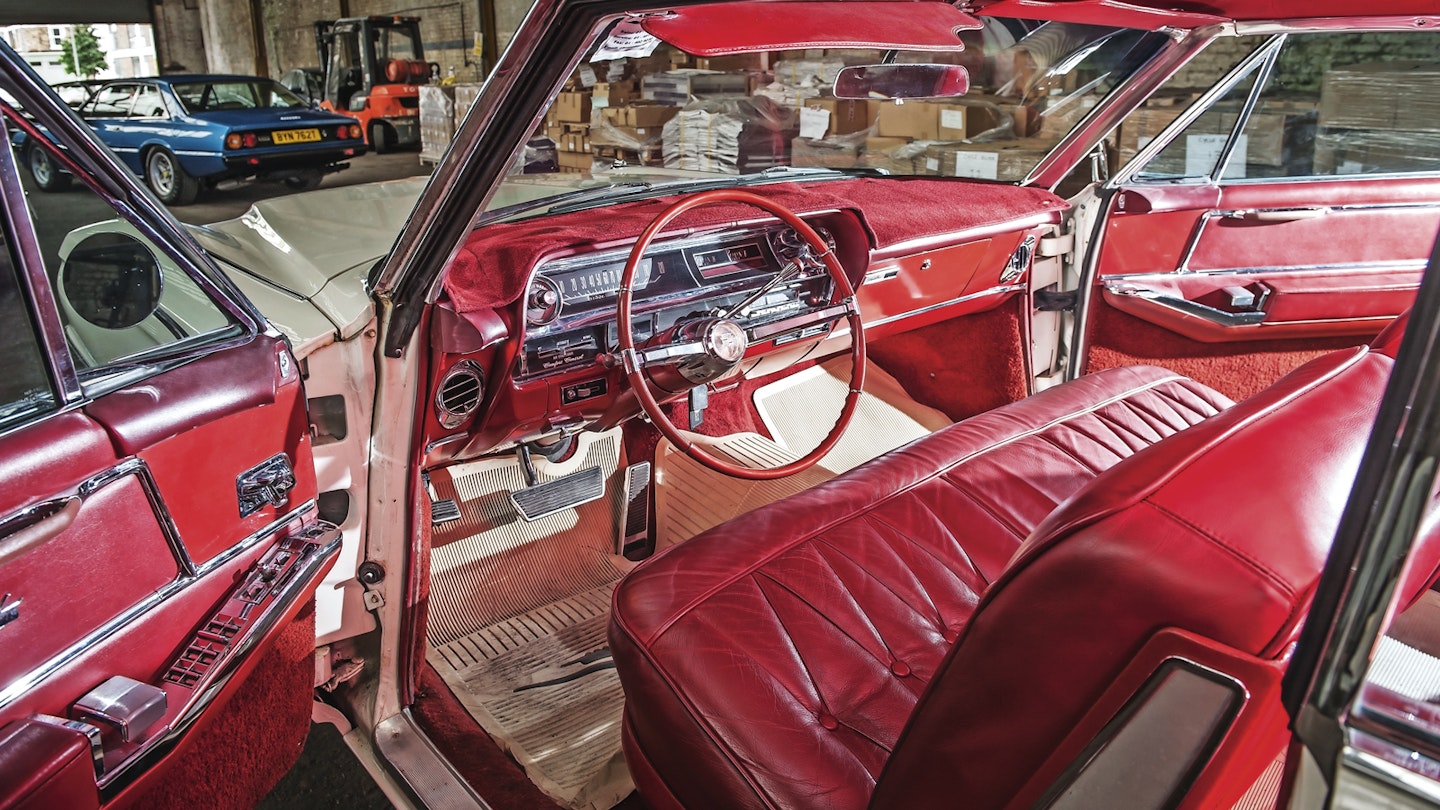
‘My love of Cadillacs previously just covered the Fifties, but now it includes the Sixties too, to the point where I’m not a big fan of the famous 1959 Eldorado. Having said that, I’ve just bought one.’ He’s been on a Cadillac buying spree lately and this 1964 De Ville is the latest to arrive.
‘There’s something spectacular about it,’ says Schacter. ‘This is Cadillac design at its best. It’s bold and simple, reflecting the solidity of the car – but it avoids the plasticky bits, fake wood veneer and off-the-shelf GM engines that crept in by the Seventies. With the passage of time maybe I’ll end up lusting after those Cadillacs too.
‘It can be hard to get parts for classic Cadillacs, so I was lucky with this one. It only needed bits doing here and there, and it only took half a day to track them down. There are bits that would benefit from rechroming but to rechrome an American car of this era you’re looking at £5k-plus – it doesn’t make sense with these values.
‘The interiors of early Sixties Cadillacs are beautifully finished, using stainless steel and leather rather than chrome and vinyl, and there’s no fake wood. It’s also got an emergency override switch for the electrics in case you want to open the windows before you get in on a hot day.’
British sports cars: Reliant Scimitar GT, Sunbeam Alpine Series 3 and MG Midget 1500
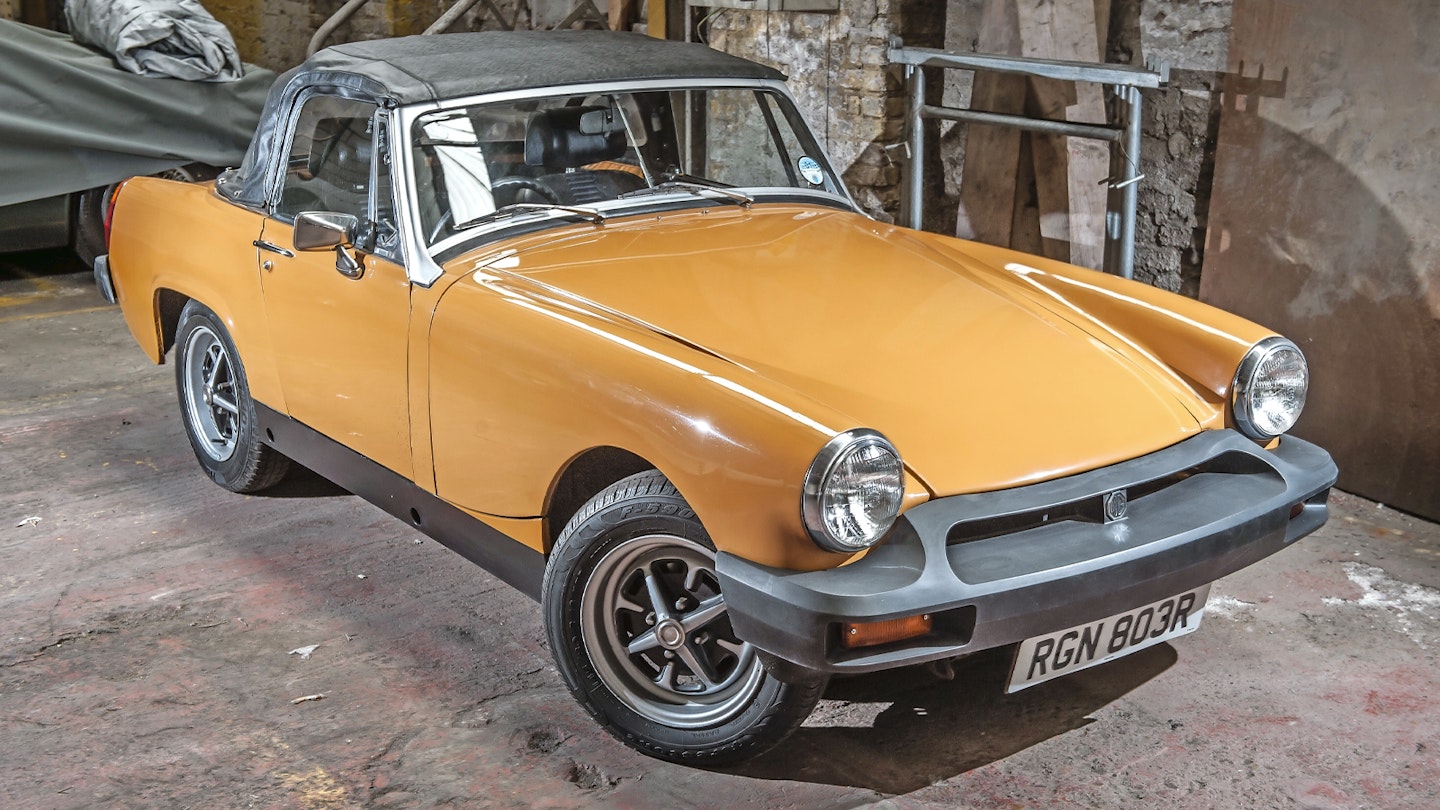
Schacter is still ruing an accident when bringing the Scimitar and Alpine home – a tyre blew out on his trailer, snapping it sideways on the M25 and sending the two cars slamming into each other. They both have frontal damage. ‘I’ve always loved the early Scimitar GT,’ says Schacter wistfully.
‘I found this one on eBay and did the deal over the phone. I could tell it was a good car and it was one of only 300 SE4s made, with a Ford Zephyr engine and three SU carburettors. The engine is set so far back in the chassis, working on the rearmost carburettor is really tricky. It drives nicely. The interior’s not standard but it’s been trimmed almost to Aston Martin standards.
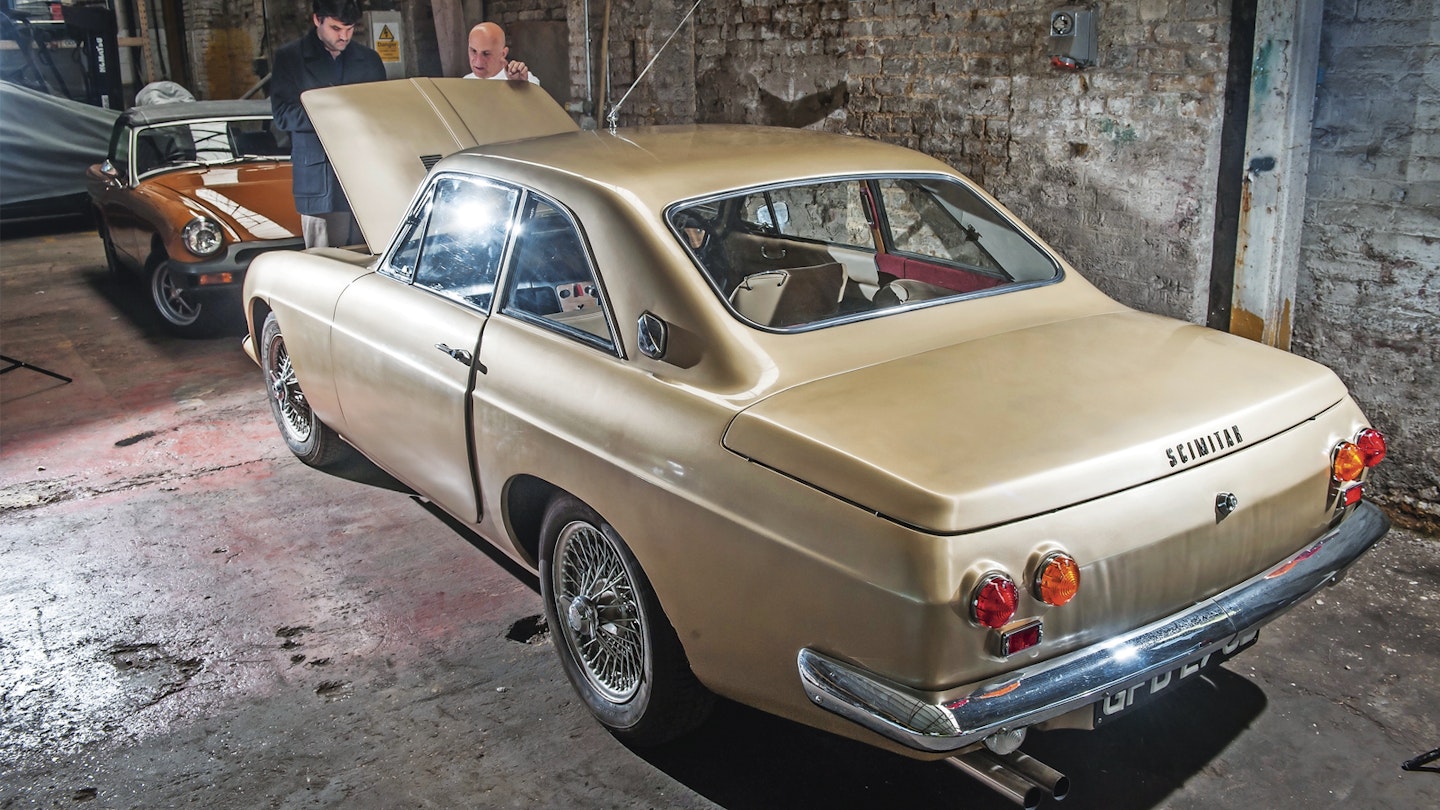
‘The Sunbeam Alpine was bought as a gift for my partner, who fancied a classic after going to Silverstone Auctions in 2013. She liked the Alpine and I found this one at a Sunbeam specialist. The big-fin car is bold and distinctive, but this one had been rallied and had the wrong carburettors for road use. It had just been converted back to standard and I was bringing it home when the accident happened.’
And the MG Midget? ‘That was an impulse buy at auction. I bought it to sell to cover the fuel costs bringing the American cars back on the low-loaders – it’s cheaper to fuel diesel lorries than petrol Cadillacs!
‘It’s difficult to find such nice examples of these, but I’m reluctantly parting with it – £3995, but I’m open to offers.’
Looking forwards, Schacter hopes to grow the business – and buy yet more Cadillacs, of course.
